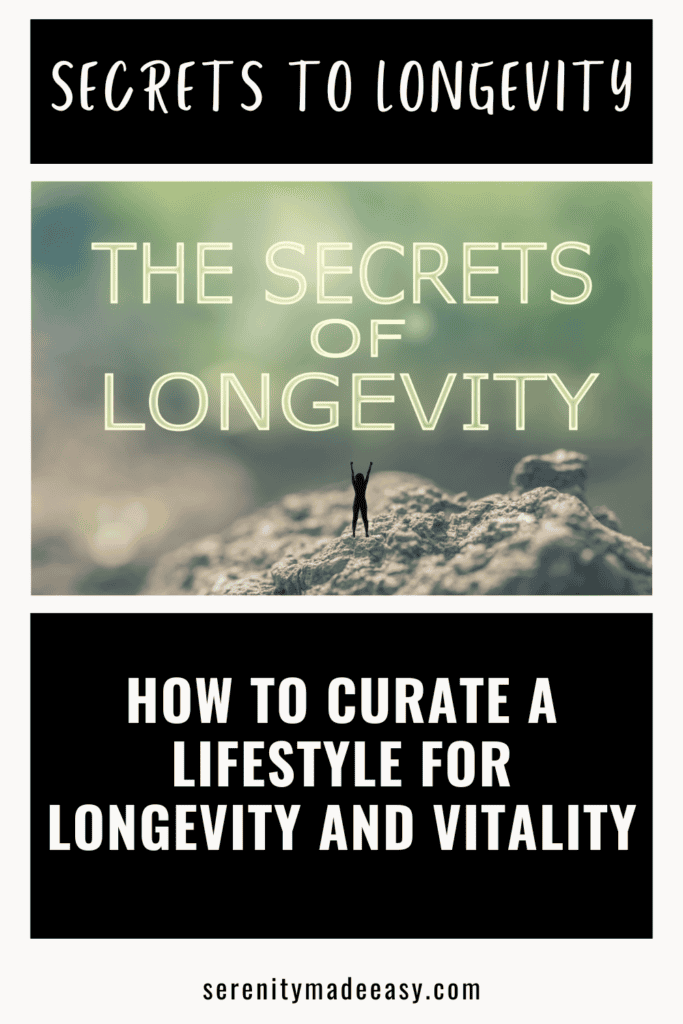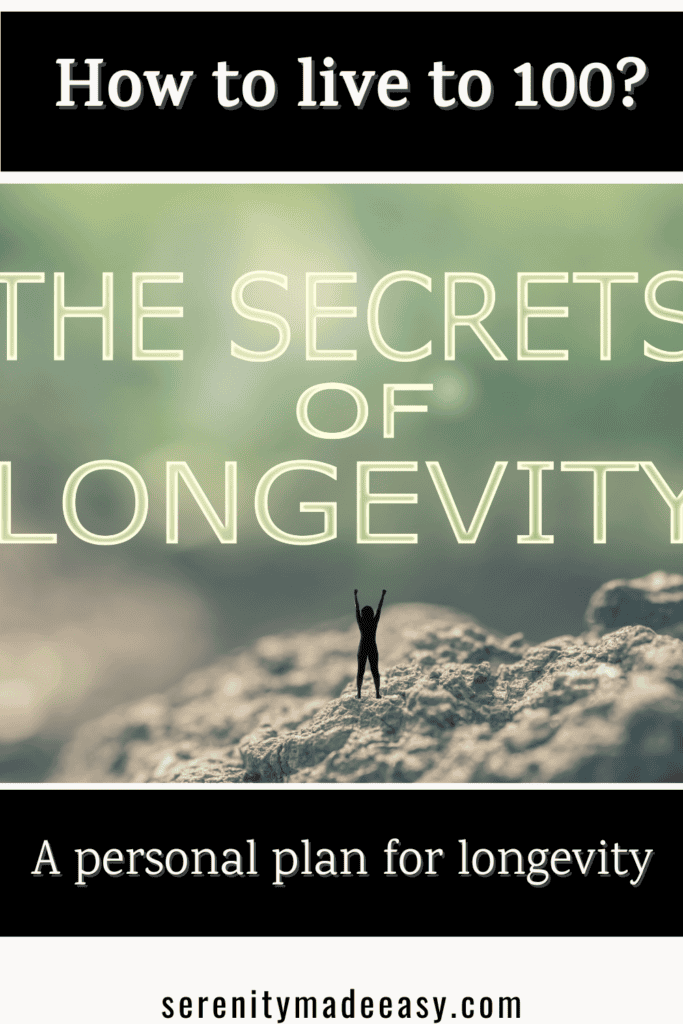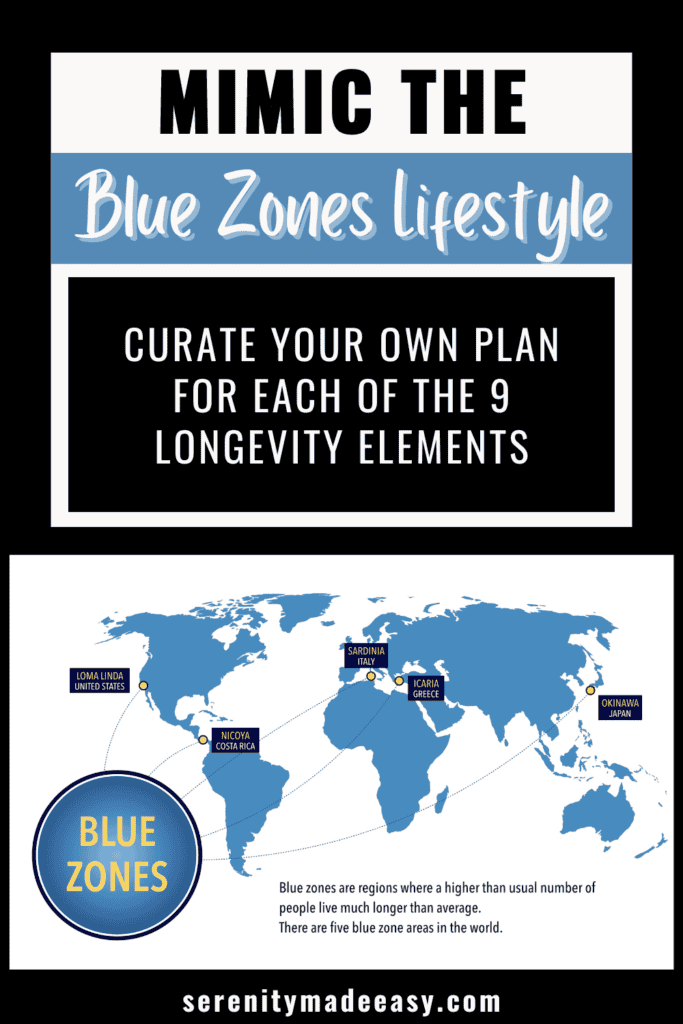This post may contain affiliate links. If you click one and make a purchase, I earn a small commission at no extra cost to you. It helps support the site so I can continue to offer great content to you!
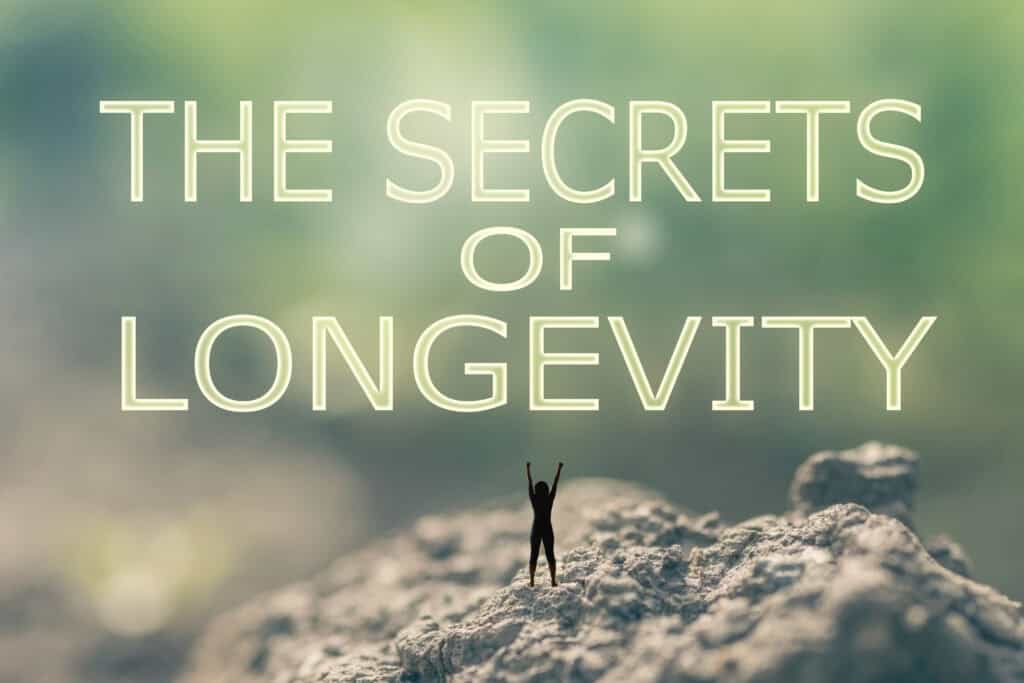
During my recent vacation, my friends shared a documentary they had just finished watching on Netflix called “Live to 100: Secrets to the Blue Zones”. Although I had heard of the Blue Zones, I had not watched the documentary yet or done much research on the topic. Our conversation got me started and I became fascinated with learning everything I could about it. This led me to draft a plan to create my own Blue Zones solutions.
What are the Blue Zones
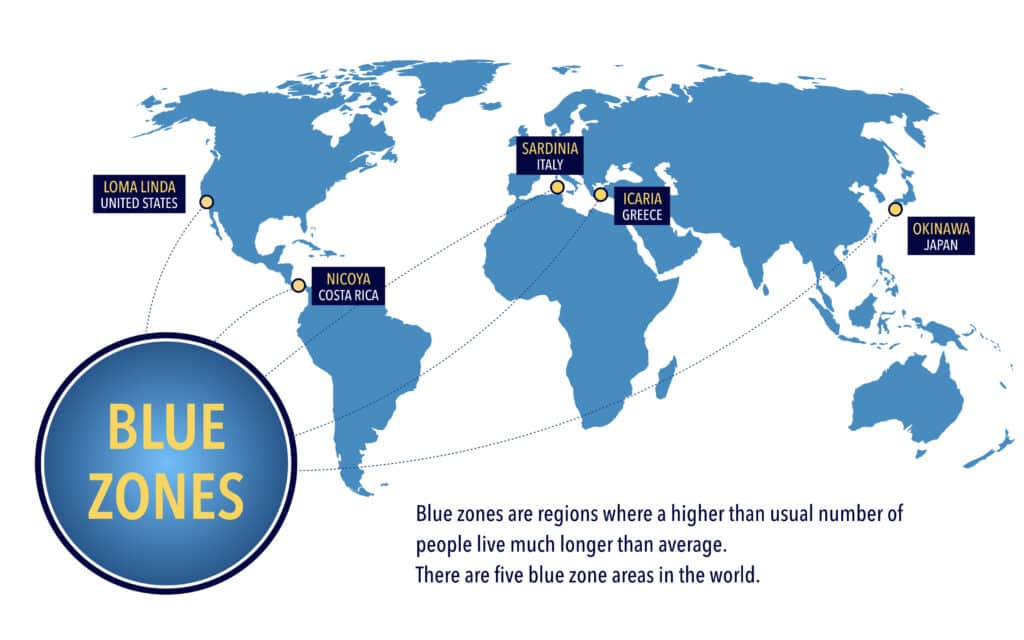
The Blue Zones are areas around the world (five to be exact) that have the largest proportion of individuals over 100 years old. These centenarians not only live to 100 but also have an active and fulfilling lifestyle until their last breath.
Back in 2004, Dan Buettner, a National Geographic explorer and journalist observed five areas that later became known as the Blue Zones. Over the course of 20 years, a team of scientists continued to observe and research these areas. This is a great book if you’d like to dive deeper into the topic.
The five Blue Zones are:
- Ikaria, Greece
- Loma Linda, California
- Sardinia, Italy
- Okinawa, Japan
- Nicoya, Costa Rica
They were fascinated by all of the centenarians living in these Blue Zones and wanted to uncover the secrets to their longevity and vitality.
What components made the Blue Zones?
The Blue Zones have been the subject of extensive research. One Danish study revealed that genetics only determine 20% of longevity. This is fantastic news, as it means that we have the power to take control of our own health and increase our life expectancy.
The Blue Zones research team came up with the Power 9. These nine components represent the secrets to longevity in the Blue Zones and should be considered when we are trying to create our own Blue Zone solutions.
- Move Naturally: move your body by living a naturally active lifestyle
- Sense of Purpose: our reason to get up in the morning
- Downshift/less stress: having methods and routines to help lower stress
- 80% rule: only eat to 80% fullness
- Plant slant: eat way more plants and way less meat
- Wine at 5: moderate and regular wine-drinking
- Belong: being part of a community where we share a faith or goal
- Loved ones first: having a commitment to our family and close friends
- Right tribe: finding and cultivating the right inner circle of friends
I found these findings fascinating. And because I want to live a long, active, and healthy life, I decided to create my own Blue Zones solutions to support my goal.
My Blue Zones solutions
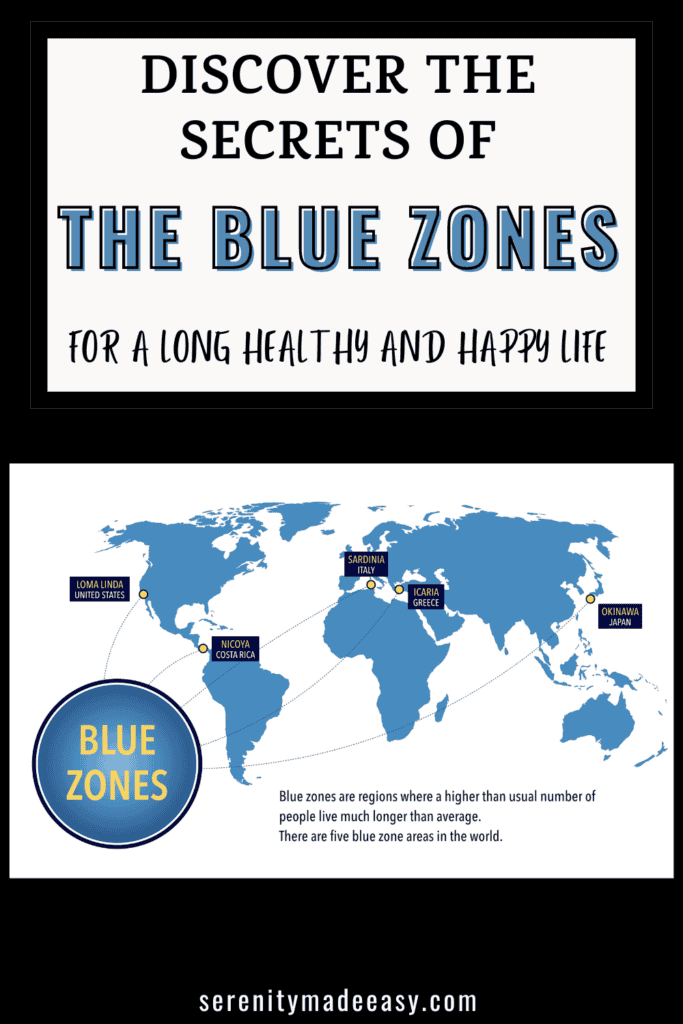
To create my Blue Zones solutions, I assessed each of the nine components and identified areas for improvement and strategies to support my goals.
1. Move Naturally
I love this one. Many of us depend on a gym membership to stay active as our jobs often require us to sit for long periods of time. However, I like to challenge myself by finding ways to include more natural movements in my daily routine. Here are some ideas:
- Carry the laundry upstairs without a basket. This forces me to take more trips up and down the stairs.
- Vacuum or use a broom in our main living area daily.
- Take more calls while walking or standing. I do have this standing desk at home. I love it!
- I already do this one but I cook more meals from scratch. That is a lot of standing time.
- Have a garden.
- Do your own yard work.
- Park as far as I can in the parking lot.
- Always use the stairs (okay maybe not in a high rise).
- Use the floor for tasks like folding laundry or writing a grocery list. This forces you to get up and down.
- Do your own housework.
- Walk the dog.
- At work: walk to the furthest bathroom.
I do yoga several days a week. This is my current non-slip mat. I’ve had it for years and loved it. However, it’s pretty worn out and I plan to upgrade it with this one soon.
I also have a deep love for Pilates. As I get older, I take great care to try and maintain my muscle mass. Pilates is outstanding for this. I use minimal equipment which makes it a pretty cheap exercise method. I have a pilates’ ball and some resistance bands. You can get some light to medium weight but this isn’t necessary.
Lastly, I try to walk 3 miles most day (here are my favorite walking shoes and boots for the winter nonths). I cannot change the fact that I have a sedentary job and I understand the ideas above aren’t enough movements. However, I am always looking for opportunities to move more.
2. Sense of purpose
This one can be a bit difficult. Not all of us have an obvious life calling. I don’t.
Then, what is my sense of purpose?
I chose to get married and have children. Therefore, part of my purpose is to create the best life for myself, my husband, and my children. Don’t get me wrong, I am not solely responsible for their happiness and success. But I am a part of it.
Creating a safe and pleasant home, feeding my family healthy food, raising children who will be able to live a great life on their own, and earning an income to support our goals and dreams are all part of why I wake up every day.
3. Downshift/less stress
Everyone has stress in their life and the point isn’t to find out who’s more stressed than who.
Stress can be very detrimental. That’s why it is important to manage our stress levels. I have always looked for ways to improve in this area.
I’ve written a few articles about how to find balance to reduce stress, and how to lower stress via better organization methods.
Here are a few of my strategies:
- No checking work emails at night and on weekends
- Listening to a podcast or book while cooking dinner after work
- Going for a walk (my favorite walking shoes)
- Write down what is stressing me (here is the prettiest notebook I recently got)
- Keep a daily planner to set daily tasks and cross them off. This is huge for me to stay organized!
- Get proper sleep
- Do yoga
- Practice meditation
- Talk to a friend or family member
- Organize as much of my life as I can
- Setting boundaries
4. 80% rule
Several studies have dove into the topic of calorie restriction and longevity and found a correlation. The reality is that the American diet encourages individuals to eat way more than what is needed to support their bodies in a healthy way.
For this and many other reasons, I practice intermittent fasting. And while my meals may or may not leave me 80% full, I know that my daily consumption is likely around the recommended 80%.
Adopting intermittent fasting is a great strategy that doesn’t force you to count calories and does not leave you feeling hungry.
5. Plant slant/eat more plants and less meat
This one is quite difficult for me. Let me explain.
I am allergic to soy, peanuts, almonds, hazelnuts, legumes (all beans), and peas. I am also suspecting a quinoa intolerance. Lastly, I have IBS and many plants contribute to my symptoms.
You can probably see where a whole food plant-based diet is likely not in the cards for me.
With that said, I do try to focus on whole food as much as I can. I do my best to eat at least 30 different types of plants each week based on the recommendations from this research. My diet consists of:
- Good quality eggs, meat, and fish products.
- Lots of fruits and vegetables, mostly organic.
- I make my own sourdough bread, pizza dough, crackers, etc.
- Limited amount of organic dairy products.
- Organic grains: rice, oats, etc.
- Very little highly processed pre-packaged food.
Highly processed food is terrible for the human body. Often time, your body doesn’t even recognize the “food” you are consuming leaving you feeling “still hungry” and “unsatisfied” with your snack or meal. Highly processed foods have also recently been found addictive which makes you crave them and leave you in this vicious unhealthy circle.
6. Wine at 5
This is quite possibly the component I struggle with the most. I think there is a big difference in the quality of wine found in America versus homemade wine made by the Blue Zones habitants.
Therefore, I will say, you do you.
When I first started my blue zones method, I used to drink wine in moderation (my cute wine glass promotes moderation). In 2024, I decided to stop alcohol completely. Here is how I did it.
7. Belong
I do not have any type of faith-based practice. However, I have many passions and beliefs that bring me to belong to a few communities.
I have my online IF (intermittent fasting) and AF (Alcohol free) communities which are very important to me. I would like to expand this and find an “in-person” communities.
I have my work community. I am still in the workforce and have a great community of coworkers to share my daily life with.
A future goal in my Blue Zones Solutions plan is to join a community of volunteers in my area. I have not determined any of the details yet, and I’m not sure when this can be added to my life, but this is on the road map.
8. Loved ones first
I have always been pretty centered on my loved ones, but there is always room for improvement.
My parents live far from me, how can I put them first more often in various areas of my life?
- Call more often
- Try to make an annual trip to my hometown/country
- Visit or invite our close relatives more often
- Be more present when I do spend time with loved ones
- Join loved ones in activities that THEY love from time to time
9. Right tribe
It is important to cultivate and nurture relationships with “my tribe”.
I am really bad at this, unfortunately.
However, this isn’t an excuse. I need to improve in this area if I want to incorporate this component into my own Blue Zones way of living.
I plan to:
- Call more
- Organize visits
- Be my authentic self in those relationships
- Be open to new relationships with people that have similar life goals and values
In conclusion
I had a lot of fun researching the Blue Zones and curating a plan for my own personal Blue Zones solutions. I encourage you to look into how you can make changes to your lifestyle to support a longer and more vibrant life. I’d love to hear some of your strategies.
Thanks for reading.
Love, Cat xxx
